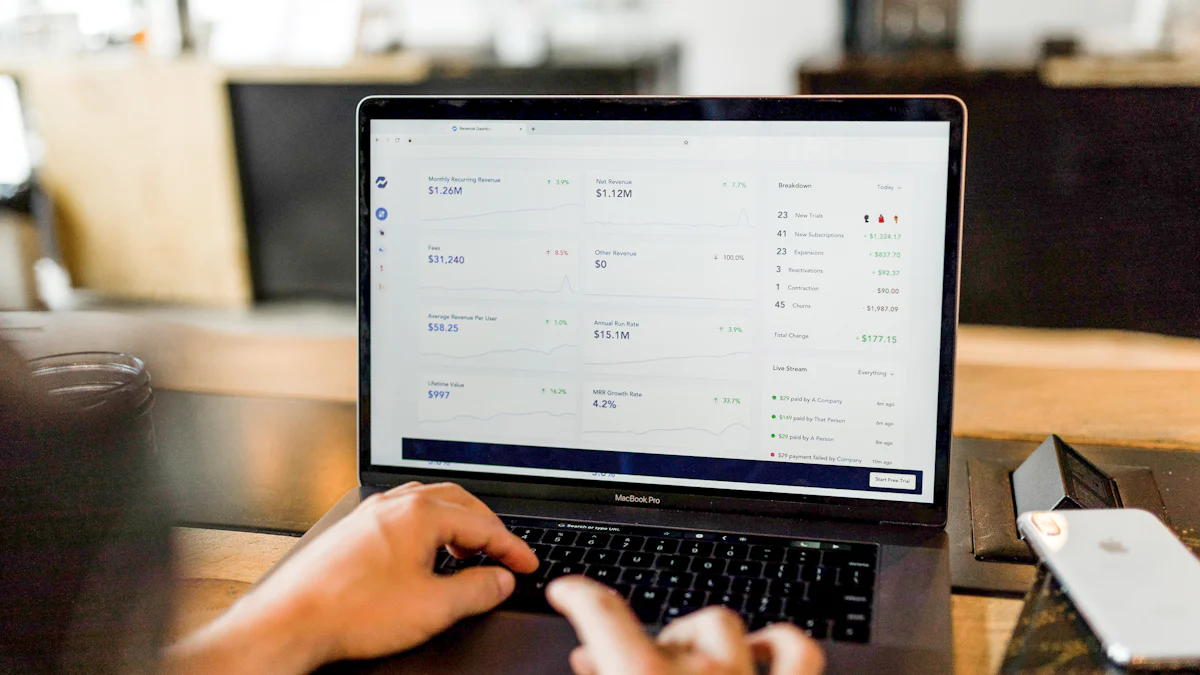


Cost Per Conversion represents the average expense to achieve a single conversion, like a sale or sign-up. Every marketer needs to grasp this concept. Cost Per Conversion plays a crucial role in assessing the efficiency of marketing strategies. Understanding this metric helps you optimize campaigns and maximize return on investment. A lower Cost Per Conversion indicates a more cost-effective strategy. This metric enables businesses to convert visitors into customers efficiently. Mastering Cost Per Conversion can significantly boost your marketing success.
Understanding Cost Per Conversion

Definition and Explanation of Cost Per Conversion
What is a Conversion?
A conversion happens when a visitor completes a desired action. This action could be a purchase, a sign-up, or another goal. Each business defines conversions based on objectives. Conversions help measure the success of marketing efforts.
How is Cost Per Conversion Calculated?
To calculate Cost Per Conversion, divide the total ad spend by the number of conversions. This formula provides a clear view of expenses per conversion. Businesses use this metric to evaluate campaign efficiency. A lower Cost Per Conversion indicates better performance.
Importance in Marketing
Budget Optimization
Cost Per Conversion plays a vital role in budget optimization. Marketers allocate resources more effectively with this metric. A focus on reducing Cost Per Conversion leads to smarter spending. Businesses achieve more conversions without increasing budgets.
Measuring Campaign Effectiveness
Cost Per Conversion acts as a key indicator of campaign effectiveness. Marketers assess which strategies yield the best results. This metric helps identify successful campaigns. Adjustments improve overall marketing performance.
Comparison with Other Metrics
Cost Per Click (CPC)
Cost Per Click (CPC) measures the cost for each click on an ad. CPC focuses on attracting visitors to a site. Cost Per Conversion, however, emphasizes converting those visitors. Both metrics provide valuable insights but serve different purposes.
Cost Per Acquisition (CPA)
Cost Per Acquisition (CPA) calculates the cost to acquire a customer. CPA includes all expenses related to customer acquisition. Cost Per Conversion focuses solely on the conversion process. Both metrics help businesses understand marketing efficiency.
Practical Applications of Cost Per Conversion
Strategies to Lower Cost Per Conversion
Target Audience Refinement
Refining the target audience can significantly lower the cost per conversion. Marketers need to focus on understanding who the ideal customer is. Demographics, interests, and behaviors play a crucial role. Analyzing these factors helps in crafting more targeted campaigns. Businesses can reduce wasted ad spend by reaching the right people. A refined audience means higher chances of conversion.
Ad Content Optimization
Optimizing ad content is another effective strategy. Engaging and relevant content captures attention. Clear messaging and strong calls-to-action drive conversions. Testing different ad variations helps identify what works best. Marketers should focus on visuals and headlines that resonate with the audience. Effective ad content leads to a lower cost per conversion.
Tools for Tracking and Analysis
Google Analytics
Google Analytics offers valuable insights into campaign performance. Marketers can track conversion rates and user behavior. This tool helps identify which channels drive the most conversions. Businesses can use data to make informed decisions. Google Analytics provides a clear picture of marketing effectiveness.
Marketing Automation Platforms
Marketing automation platforms streamline tracking and analysis. These tools offer features like lead scoring and segmentation. Automation platforms help manage and optimize campaigns efficiently. Marketers can track customer journeys and conversion paths. Using these platforms results in better resource allocation.
Best Practices for Managing Cost Per Conversion

Regular Monitoring and Adjustment
Analyzing Conversion Data
Regularly dive into conversion data to spot trends and patterns. Look at which campaigns perform well and which ones need tweaking. Use tools like Google Analytics to get a clear picture of user behavior. Identify the channels that bring in the most conversions. A thorough analysis helps you make informed decisions about where to focus your efforts.
Adjusting Bids and Budgets
Adjust bids and budgets based on conversion data insights. If a campaign shows high conversions, consider increasing the budget to maximize results. For underperforming campaigns, reduce spending or reallocate funds. Keep an eye on market changes and competitor strategies. Flexibility in bidding and budgeting can lead to better cost per conversion outcomes.
Case Studies and Examples
Successful Campaigns
Boosting Efficiencies and Reducing Cost per Conversion: One company managed to increase conversions by 44.5% by refining their target audience and optimizing ad content. The focus on specific demographics led to more relevant ads, resulting in a lower cost per conversion. This case shows the power of targeted marketing strategies.
Lessons Learned
Optimizing Landing Page for Cost per Conversion: A well-optimized landing page can significantly impact conversion rates. One business saw a higher number of users converting to paying customers after improving their landing page design. Clear calls-to-action and engaging content played a crucial role. This example highlights the importance of user experience in reducing cost per conversion.
Understanding Cost Per Conversion is crucial for your marketing success. This metric helps you see which channels work best. You can optimize your budget and get more bang for your buck. Regular analysis keeps your campaigns sharp. You can adjust strategies to lower costs and boost conversions. Managing Cost Per Conversion leads to smarter spending. Your business will thrive with efficient client acquisition. Keep an eye on this metric for long-term sustainability. Your marketing efforts will pay off when you master Cost Per Conversion.
FAQ
Cost Per Conversion shows how much money you spend to get one conversion. A conversion could be a sale, sign-up, or any action you want from your audience. This metric helps you see if your marketing efforts pay off.
Cost Per Conversion matters because it helps you convert visitors into customers without spending too much. You can avoid paying more than necessary for each new client. A lower cost means your strategy works well.
You find Cost Per Conversion by dividing total ad spend by the number of conversions. This formula gives a clear picture of your expenses for each conversion. Knowing this helps you make smarter marketing decisions.
Many things can change Cost Per Conversion. Your target audience, ad content, and landing pages play big roles. Changes in these areas can lead to higher or lower costs. Keeping an eye on these factors helps you stay efficient.
Lowering Cost Per Conversion involves refining your target audience and optimizing ad content. You should focus on creating engaging ads and improving landing pages. These steps help you reach the right people and convert them effectively.
Cost Per Conversion and Cost Per Acquisition are not the same. Cost Per Conversion focuses on the cost of getting a specific action. Cost Per Acquisition looks at the cost of acquiring a customer. Both metrics offer valuable insights but serve different purposes.
Yes, Cost Per Conversion can differ across industries. Different products, services, and audiences lead to varying costs. Understanding your industry norms helps you set realistic goals for your campaigns.
Continue Reading About Cost Per Conversion
10 Game-Changing Project Management Reporting Types!
Unlock project success with 10 must-know reporting types! Track progress, manage risks, and stay on budget like a pro.
Lewis
Mar 03, 2025
10 Must-Have Marketing Agency Reporting Tools for Your Success
Optimize your agency's performance with top reporting tools. Explore analytics, social media, SEO, and more for data-driven decisions and efficiency.
Lewis
Oct 09, 2024
15 Best Software Reporting Tools for 2025
Explore the top 15 software reporting tools for 2025. Compare features, pricing, and usability to find the best fit for your business needs.
Lewis
Oct 08, 2024
2025 Best Data Integration Solutions and Selection Guide
Explore top data integration solutions for 2025, enhancing data management and operational efficiency with leading platforms like Fivetran and Talend.
Howard
Dec 19, 2024
2025 Data Pipeline Examples: Learn & Master with Ease!
Unlock 2025’s Data Pipeline Examples! Discover how they automate data flow, boost quality, and deliver real-time insights for smarter business decisions.
Howard
Feb 24, 2025
2025's Best Data Validation Tools: Top 7 Picks
Explore the top 7 data validation tools of 2025, featuring key features, benefits, user experiences, and pricing to ensure accurate and reliable data.
Howard
Aug 09, 2024


